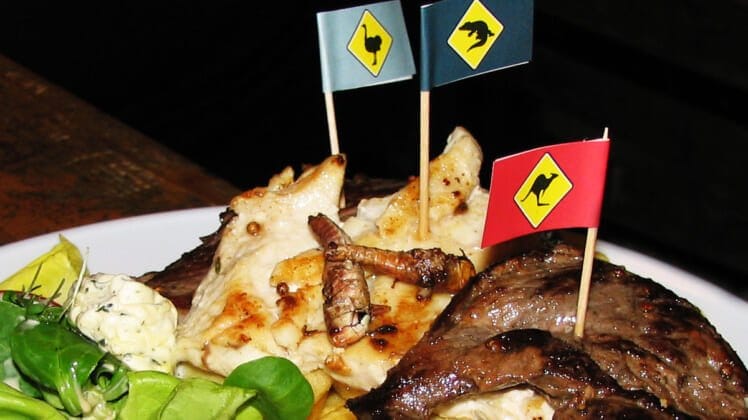
Australian cuisine is one of uncommon meat, fish, and western influence but it does not do justice to the modern diversity and quality which showcase Australia as a hub for global culinary masterpieces.
In Australia, you’re likely to sample the best the world has to offer in terms of culinary treats. Yet, when looking at traditional and solely Australian cuisine, despite the country being inhabited for many thousands of years before Dutch explorers found it in the early 17th century, there’s only modern western cuisine.
CHECK OUT: Malaysian Cuisine, the ultimate in hot and spicy.
The Western Influence On Australian Cuisine
This western influence likely began when Great Britain claimed the east half of the country in 1770 so that they could make prison colonies. Amazingly, the date of January 26, 1788, is considered Australia’s National Day, and it represents the first arrival of British ships and likely the start of this modern western cuisine that includes pies, fish and chips, and more.
From this point, Australia’s population and fortune grew. In the 1850s there was a gold rush, and in 1901, the colonies united into the Commonwealth of Australia. Since then, Australian cuisine has been shaped by popular culture, events, and the ability to grow. Australia is the sixth-largest country in the world. It is also one of the most diverse, including deserts, tropical rainforests, and mountain ranges. However, Australia’s cuisine still ended up British/American.
CHECK OUT: What makes Italian cuisine the world’s most popular?
Modern Tradition And Australian Cuisine
Between 1914 and 1918, during World War I, the wives and mothers of soldiers of the Australian and New Zealand Army Corps (ANZAC) baked biscuits and sent them to the front lines. Every year, Anzac Day is celebrated and the same biscuits are still baked in memory of those who fought in the war. The biscuits are made with rolled oats, desiccated coconut, golden syrup, and butter.
For the most part, Australian cuisine is positively simple to make, with only the ingredients seemingly exotic. For instance, barramundi gets its name from Aborigines and is a type of sea bass. Then there’s the kangaroo, Australia’s national animal. As a species they often overpopulate so eating them makes sense. In terms of cooking and taste, kangaroo is like buffalo. In traditional Australian cuisine, you’re more likely to find bbq, snags (hot dogs), and burgers unless you seek something exotic from one of its international restaurants.
The most exotic food in Australian cuisine is probably Vegemite on toast. Vegemite is a thick, dark brown spread made from brewers’ yeast extract and various vegetable and spice additives. It’s definitely more exotic than a kangaroo. Yet, this one favorite ties Australian cuisine to America in a bizarre urban legend. In October 2006, the popular Australian spread was allegedly banned in the United States, according to an Australian news company. The news stated that the United States Customs Service was searching Australians entering the U.S. for Vegemite because it contained an additive called Folate. The story spread so far that the U.S. Food and Drug Administration had to come out and say there was no ban, and no plan to ban Vegemite.
Despite its popularity in Australia, Vegemite has never really caught on in America.
CHECK OUT: Belgium’s cuisine is far more than waffles and chocolates. It’s fries, beers, and mussels too.
Favorite Australian Cuisine Treats
Fantales: A bite-sized popular Australian treat that is made from chocolate-coated caramel.
Green chicken curry pie: Take a Thai green chicken curry and put it inside a traditional English pie casing. If you like Thai food on the go, it’s worth trying.
Fairy bread: Take sliced white bread, cut it into various shapes, and cover it in butter. Then squash the bread into hundreds and thousands until covered. Minutes to make and is a treat that almost all kids in Australia have experienced.
